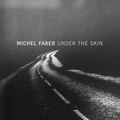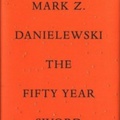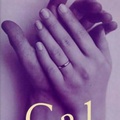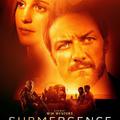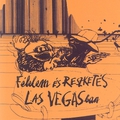Paul Auster: The New York Trilogy

I grew up watching American movies and reading American novels, so it’s no wonder that my imagination was at least partly shaped by American images. The most notable of these is the image of New York. I’ve never been there, but it always seemed a mysterious, unique but strangely transparent city to me. The sheer size and chaos of New York is in contrast to the fact that (in my imagination at least) it is a city where everything seems to be expertly organized. We can rest assured that leaving 69th street, we will find 70th – so it seems impossible to ever get lost in New York. However, Paul Auster’s The New York Trilogy proved me wrong.
I was around fifteen years old when I first borrowed this book from the local library. I simply came across the novel when I was roaming among the shelves, and I knew nothing about the book or its writer. I recall that the copy I found was an overused one: it was obvious that it had already fallen to pieces at least once, and it was rebound in something like red leatherette. Consequently, the cover contained no information whatsoever about the book, even the blurb was missing, so my only clue to the novel was its title. Which I loved immensely from the start.
Now, after several years and several re-readings of Auster’s novel, I’m glad that I knew nothing about the book when I first read it, as (among a lot of other things) this novel is about the uncanny feeling (certainty?) that sometimes even what we know to be true is entirely coincidental – so it seems fit that I first read the novel without any truths attached to it in my mind. As you may guess, the novel immediately became one of my favourites, and has held this position in my heart and mind for more than 12 years– and I don’t think it will ever fade now.
The three stories which comprise the trilogy (City of Glass, Ghosts, The Locked Room) are in fact the same story told in three different ways. At first glance, it seems that Auster is writing detective stories, as each story centers around a private detective (who is not even a detective but a writer in the first and third stories) who observes, follows and tries to uncover others in hiding. It quickly becomes obvious, however, that the „detective catching the (supposed) offender” plot is not the gist of the stories: observation itself, and the relation between the observer and the observed are the real themes of the stories. During fieldwork, the detective, instead of simply observing the other, slowly becomes the one who is observed, in the sense that he recognizes himself in the other person and it seems as if he were observing himself, not a stranger. During this process, his identity slowly merges into that of the other, their lives intertwine, and after a while it seems doubtful that he will ever be able to exist without the other.
The parts of the trilogy are highly bizarre and uncanny, and in each story we find several identity-switches, identity-duplications, stories within stories, unique narrative techniques and elements which are markedly real within an obviously fictional setting. However, Auster does not make do with this, and the three separate stories enter into intricate and intriguing relations with one another: the same characters, names, objects, themes and even sentences come up again and again in the stories, and with each recurrence, they mean something else. For instance, the Peter Stillman of City of Glass reappears in The Locked Room as the double of Fanshawe, who, by the way, bears an uncanny resemblance to the unnamed narrator-writer-detective - who just happens to be searching for Fanshawe.
Though it may seem from the above that the way the stories interweave is difficult to follow, everything becomes wonderfully clear when you start reading. Of course you will feel lost in the stories, but still, within the borders of Auster’s imaginary New York, it only seems natural that the characters should continuously become someone else, and that their inner and outer realities should effortlessly merge with the fiction they read or write.
I feel that I’m incapable of putting into words the genius of Paul Auster or the effect his writing has on me. Still, I want to try, so I will pick some elements from the novel and analyze them in the hope that this will give you a sense of the marvellously multilayered quality of the Trilogy, and will also explain why I adore this novel so much.
As regards the way inner and outer realities mingle, the representation of New York is crucially important. It mostly holds true for City of Glass that the city itself seems to be a living character with whom the other characters interact in several different ways. For instance, the protagonist of the story, the writer-detective Quinn considers the city to be an endless labyrinth where, if he is careful enough, he can really lose himself. The city hails an endless torrent of images and experiences on him, and these make it possible for him to forget himself and his inner reality, and fill the resulting inner emptiness with what is coming from the outside. The man Quinn is observing, the old Stillman, on the other hand, sees New York as the manifestation of his ideas about the new Tower of Babel and the possible common language of humankind, and he uses the city to prove his theories.
And speaking about language: apart from the questions of identity, language (and communication) is the other highly important and wonderfully depicted theme of the novel. As the story is set in perhaps the most iconic city of the world, it is no wonder that the loneliness of the city-dweller, the impossibility of communication and the theme of alienation are dealt with in the novel. However, Auster goes further. The protagonist of each of the three stories is a writer - that is, someone whose job is to paint as good a picture of reality as possible with the help of words. But at some point in their stories, they realize that the meaning of words has become blurred, and language is no longer capable of grasping the essence of reality. And if reality cannot be transformed into transparent words, then the work, identity and even the life of the writer is questioned. (Even though the protagonist of Ghosts is a detective by profession, he regularly has to prepare reports for his employer, and finding the right, most descriptive words is crucial for him, therefore I also consider him to be a writer.)
The last couple of pages of The Locked Room beautifully illustrate the point how words become devoid of meaning. The narrator is reading the densely written pages of Fanshawe's red notebook, and it seems to him that each paragraph cancels the previous one out, each sentence contradicts the following one, and in the end, no meaning whatsoever can be deciphered from his text.
Auster adds a further touch to the idea of the impossibility of communication in City of Glass. This story also features a red notebook in which Quinn jots down his thoughts about the Stillman case. As the story unfolds, and meanings and identities lose their clear boundaries, this notebook becomes the single point of reference in Quinn’s life, and it actually seems that he can continue with his life only as longs as he has empty pages in the notebook where he can write. Perhaps this idea is not that surprising if we consider the fact that Quinn is a writer, and according to the narrator of City of Glass, writers can only live through the characters they create and the words they write.
According to the mysterious, unnamed and reclusive narrator of City of Glass, the story is based entirely on facts and on the contents of the red notebook. In this sense, we might think that written communication is successful, as we do learn Quinn’s story. However, in City of Glass, nothing is fixed, and we do not get any answers to the questions which arise from the ungraspable identities of the characters and from the uncanny coincidences, duplications and mirrorings which play a crucial part in the story. Therefore it seems to me that the contents of the red notebook mask reality, rather than disclose it – so communication, again, fails. (Let me just add in brackets that throughout the story, Quinn writes with a pen he bought from a deaf-mute, so ironically, his means of communication is provided by a person who can hardly communicate. And as it turns out, Quinn’s attempts at communication do not turn out much better than those of the deaf-mute.)
Another element in the novel which fills me with constant surprise is the way Auster mixes fiction and reality. The fictionality of the stories is emphasized by the realistic setting and the appearance of hyperrealistic historical persons. And I do not only mean that the stories are set in a real city, but rather that Auster provides the reader with minute details about the streets Quinn walks on, he tells the reader which famous writer used to frequent the same park Quinn visits regularly, and we also learn the strange (but real) events that occurred during the construction of Brooklyn Bridge.
Yet another remarkable and intriguing element in the novel is that Auster’s characters read a lot, and talk even more about real or fictional books. Among several others, they mention Don Quixote and Walden, however, The Locked Room features the fictional oeuvre of Fanshawe as well, and the narrator refers to Fanshawe’s books in a way which indicates that they are now common knowledge, so there’s no need for him to elaborate on them. (And I simply adore it when a writer pretends that there is another reality inside his fiction which in turn has its own fiction – and I can hardly wait for the writer to write those fictional books as well.)
I hope that in the previous paragraphs I could give you a fairly good idea about the richness and inexhaustibility of The New York Trilogy. I don’t know how many times I read this novel so far, but I’m sure I will read it again and again in the future, as reading this book is such an enjoyable intellectual pleasure which I do not encounter often – and anyway, I still feel that the Trilogy is full of unexplored possibilities.
Finally let me recommend the following analyses of the questions of mirrorings and merging identities to those who would like to dig deeper into the uncanny world of The New York Trilogy.

